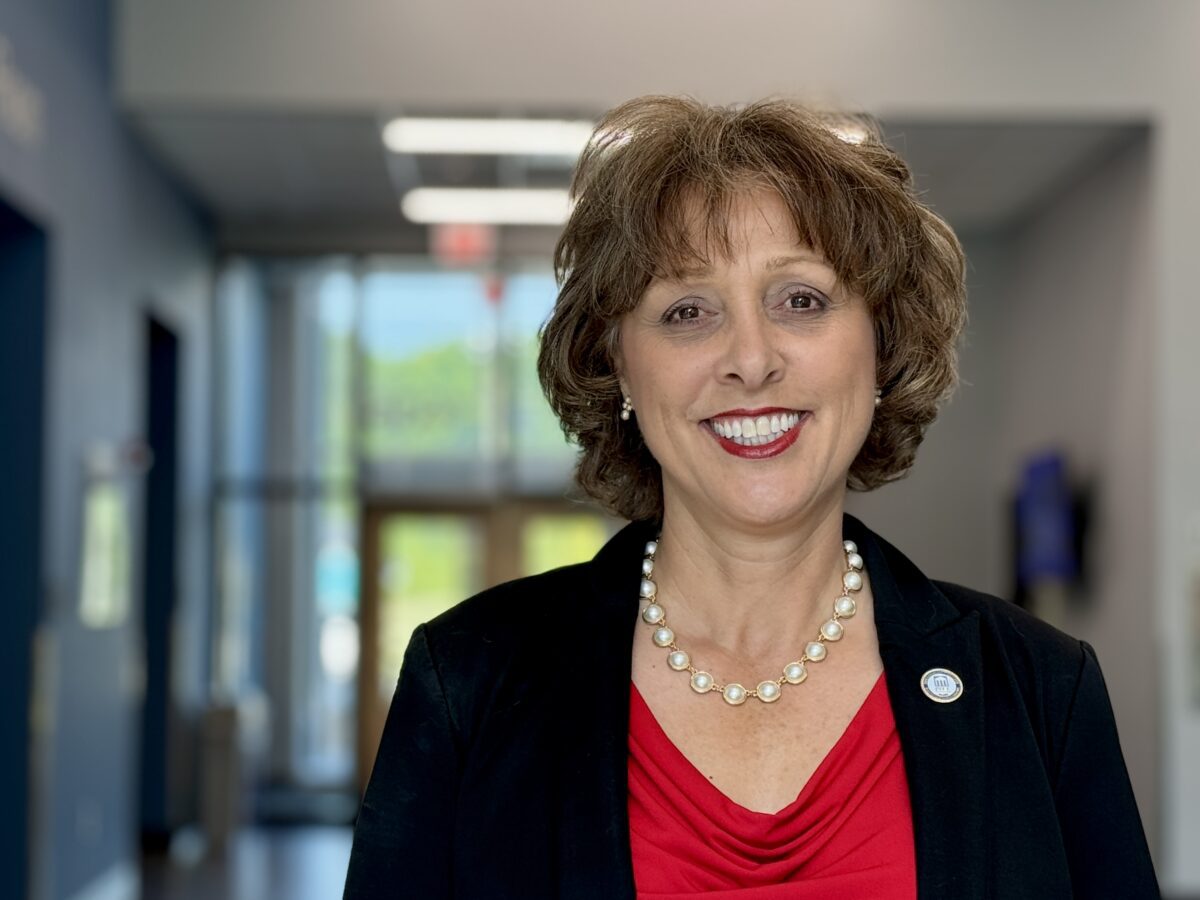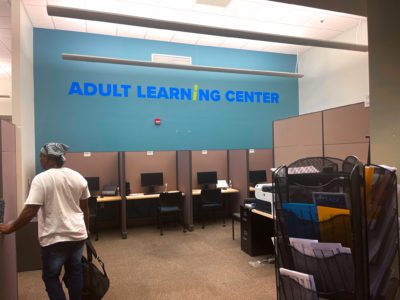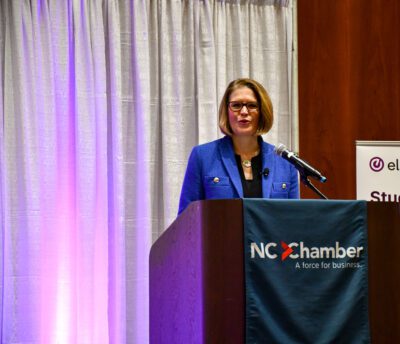
|
|
“I cannot tell you how good it feels to be back in eastern North Carolina,” said Dr. Maria Pharr, president of Pitt Community College.
In mid-August, Pharr began her tenure as president at Pitt Community College after serving as president of South Piedmont Community College for seven years. She is the first woman to serve as president of Pitt, and the move back to Greenville was a homecoming for her.
Pharr was born and raised in eastern North Carolina. She earned a bachelor’s degree from East Carolina University and lived in Greenville from 2011-16. During that time, she served as Pitt Community College’s assistant vice president of academic affairs. After that, she remained in Greenville and worked for the North Carolina Community College System as the executive director of BioNetwork and Life Science Initiatives.
“There is a deep love for the community here and the community has a deep love for Pitt Community College, and because of that, we have a commitment to be the resource for our community, whether it is education, whether it is specific types of job training, whether it is community service. That is our role here, and I take that very seriously,” said Pharr.
During her previous time at the college, Pharr worked closely with Pitt County Schools to expand Career and College Promise opportunities, helped increase enrollment at the college, and developed a partnership with N.C. Wesleyan University that allowed Pitt Community College students the opportunity to earn associate and bachelor’s degrees within three years on Pitt’s campus.
Pharr’s time at the North Carolina Community College System office allowed her to learn more about industries in the area. She took all of her previous knowledge and experience with her to South Piedmont Community College, where she helped increase enrollment by 18.6% while the overall system saw a decline in enrollment by 4% within the same time period.
“I don’t want to replicate the programs that we did, but I do want to find a way to get similar outcomes, but the way you do that is you work within the culture,” said Pharr. “I also don’t want to assume that the culture of Pitt Community College is the same as it was 10 years ago, and that means that it is a lot of discussions across campus, across the community, to understand where we are and where we want to go, and then together crafting the kinds of goals that get us there.”
There are many ways to define culture. According to Pharr, the tone that leadership sets, the way that people work both together and separately, and the shared goals they have for the future are important in supporting a healthy culture.
One of Pharr’s main goals is to help Pitt Community College continue to stay relevant through competitive course offerings and partnerships with thriving businesses in the community.
“One of the things that we will do as we start to work better together is to make sure that we remain relevant. The student of today is very different than the student of even two years ago. And one of the things that a community college does, a community college is very nimble, and we say that we’re nimble in workforce development, we also have to be nimble in the way that we look at our educational processes,” said Pharr.
Pharr has observed that some students want to “get in and get out” of school and are eager to join the workforce. For many of them, their life circumstances require that they are able to start working and earning a livable wage as soon as possible. Flexibility is also critical as community college students juggle many responsibilities, especially if they are adult learners, of which community colleges have many.
“Students want to get in and get out, and they want to get what they need for the workforce, but they may come back at another time,” Pharr said. “They want flexibility. There are certain barriers that our community college students face, and we have to ensure that we are knocking those barriers down so that we can actually have the students within the region see the value that we bring.”
The BioPharma Crescent

Pitt County is part of the BioPharma crescent along with Edgecombe, Johnston, Nash, and Wilson counties. This network of counties works together to promote the assets of their region and support the expansion of the biopharmaceutical industry.
Pitt County is home to several large biopharma companies, including but not limited to Thermo Fisher Scientific, CMP Pharma, and Catalent.
Thermo Fisher Scientific is the largest manufacturing employer in Pitt County, employing 1,897 people in Greenville, according to data from Pitt County Economic Development. They report having an annual revenue of more than $40 billion. Thermo Fisher Scientific is just one of Pitt Community College’s industry partners.
“There are major industries here as part of the crescent, and we have to make sure that we are staying connected,” Pharr said. “We have to be on the cutting edge. And cutting edge isn’t necessarily the greatest technology. It’s being prepared ahead of time for what we know is coming.”
Pitt Community College’s biotechnology department prioritizes working with industry partners. In class, the students work on industry-grade equipment that is identical in many cases to the equipment that they will be working on if they choose to work at the college’s industry partners like Catalent or Thermo Fisher.
Benjamin Trimpi, a biotechnology instructor at the college, teaches several levels of courses. In the first level of his course, which is a semester-long class, he uses three or four PowerPoints total. The rest of the classes are hands-on and experiential, where students are learning how to use the equipment and complete tasks that they will be expected to do in an industry biotechnology lab.


“You’ve got local industries that are doing this at work, why don’t we do exactly what they do in the classroom? This is easy. We basically train, and the classes are essentially as real world as possible,” Trimpi said. “So what they’re doing right now is what they’re going to do when they get a job.”
Many students choose to go straight into the workforce upon completing their associate degree in biotechnology. Other students choose to continue their education in biotechnology, often at East Carolina University, where they can earn a bachelor’s degrees in biology and master’s degree in biotechnology, building off of their foundation from Pitt Community College.
“These are the kinds of jobs that with a community college technical degree, you can start at any of those companies, and you can find yourself moving up through the ranks with additional education,” said Pharr.
New welding facility
Enrollment in welding classes has been growing steadily at Pitt Community College, which currently has North Carolina’s largest welding program. To meet the increased interest and provide more opportunities for students, there is a new welding facility being built on campus. The facility will be a 30,000-square-foot space and is expected to be completed in the winter of 2025.
The new facility will allow the college to expand opportunities in welding, technology, and robotics. Pharr hopes that with all of the exciting growth ahead, the college can remain committed to collaboration as key in meeting the needs of students in their community.
“We have to partner together and say, you know, how can we do this in collaboration? And I think that happens more than people realize, because we do have to see ourselves as interconnected. We have to. It’s the only way that we’re going to be able to satisfy the needs of our students,” said Pharr.








